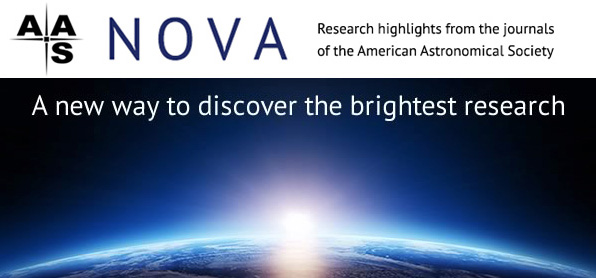Highlights from AAS Nova: 25 October - 7 November

Susanna Kohler American Astronomical Society (AAS)
AAS Nova is a new website that provides brief highlights of recently published articles from the AAS journals. Its intent is to gain broader exposure for AAS authors and to provide astronomy researchers and enthusiasts with summaries of recent, interesting research across a wide range of astronomical fields.
The following are the AAS Nova highlights from the past two weeks; follow the links to read more, or visit the AAS Nova webpage for more posts.
6 November 2015
Masquerading as a Merger
Dual active galactic nuclei are often produced when two galaxies collide, but they’re difficult to identify because the nuclei are so close together. Now, a team of authors has found a new way of confirming these objects.
4 November 2015
Testing for the Presence of a Planet
The T Tauri star PTFO 8-8695 has been suspected of harboring a close-in giant planet, but a recent study has cast doubt on this theory.
2 November 2015
Featured Image: A Double Cluster
A recent study used the Hubble Space Telescope to perform a high-resolution multi-band survey of Westerland 2, the very young star cluster visible in this spectacular image.
30 October 2015
Making Stars … With a Little Help
Could high rates of star formation, observed in galaxies at high redshifts, be explained by feedback from active nuclei at the centers of the galaxies?
28 October 2015
What Do You Get When Two Neutron Stars Merge?
What remnant is formed by a neutron-star merger: another neutron star? Or a black hole? The answer determines whether or not an explosion of energy is released in the form of a gamma-ray burst.
26 October 2015
A Star on the Run
Usually stars that are born together tend to move together — but sometimes stars can go rogue and “run away” from their original birthplace. Two astronomers have now discovered the first runaway red supergiant ever identified in another galaxy.


